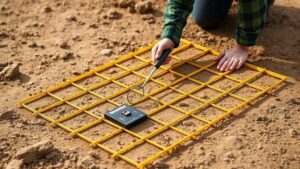Techniques for Locating Lost Currency Near Abandoned Docks
Techniques for Locating Lost Currency Near Abandoned Docks
Abandoned docks hold a unique allure for treasure hunters and historians alike, often concealing remnants of a bygone era, including lost currency and forgotten valuables. The challenge lies in the vastness of these areas and the complexities of their former uses. This article explores various techniques for locating lost currency near abandoned docks, addressing both the methodologies considered effective and the tools that facilitate such pursuits.
Understanding the Historical Context
To successfully locate lost currency, it is essential to establish a historical context for the abandoned dock. Many docks were once vibrant centers for trade and commerce, with ships frequenting them to transport goods and finances. This historical foundation can provide valuable clues regarding potential treasures hidden in the sediment.
- Research old maps: Understanding the layout of the dock and its surroundings can highlight previous routes used for shipping.
- Investigate historical records: Delving into archives may uncover accounts of lost cargo and financial transactions.
For example, the once-busy waterfront of San Francisco during the Gold Rush era saw numerous lost treasures due to shipwrecks and theft, making thorough research indispensable for modern treasure seekers.
Essential Tools for Locating Currency
Equipping oneself with the right tools can significantly enhance the chances of locating lost currency. Advanced technology can prove invaluable, especially in challenging environments commonly found near abandoned docks.
- Metal Detectors: These devices are particularly effective in identifying coins and metallic objects buried in sand or mud. High-frequency metal detectors, especially those designed for wet and salty conditions, can increase detection rates.
- Sonar Scanning: Utilizing sonar technology allows for the mapping of underwater obstructions and items, directing search efforts more effectively.
- Drones: Equipped with cameras and scanning technology, drones can efficiently survey large dock areas, providing aerial insights.
For example, a metal detector made for marine conditions can detect targets up to several feet below the surface, making it a primary tool for underwater searches.
Effective Search Techniques
Once adequately equipped, employing effective search techniques is crucial. The following methodologies can streamline the process of treasure discovery:
- Grid Pattern Searches: Systematically scanning an area in a grid pattern ensures thorough coverage. This technique allows treasure hunters to avoid missing spots and optimize time spent on the search.
- Waterway Sampling: Conducting sediment and silt samples from nearby water sources can uncover small coins or currency periodically washed away.
- Magnet Fishing: This involves using a strong magnet to retrieve ferrous objects from the water. Since many older coins are metallic, this technique can yield surprising results.
A practical illustration of these search techniques can be seen in the activities surrounding the remnants of the New York Harbor, where amateur treasure hunters frequently employ grid systems and magnet fishing to locate artifacts.
Legal and Ethical Considerations
When engaging in treasure hunting activities, legal and ethical considerations must be taken into account. Various regions have regulations surrounding the recovery of items from abandoned or protected sites. Compliance with local laws is essential to avoid potential legal repercussions.
- Permits: Check for required licenses or permits needed to conduct searches in specific areas.
- Cultural Heritage Laws: Respect all laws concerning heritage artifacts and ensure that all findings are reported to the appropriate authorities.
Failure to adhere to these guidelines can result in confiscation of finds and fines, as highlighted in several cases involving unauthorized excavations in maritime national parks.
Real-World Applications of Techniques
The techniques discussed have been successfully applied in various real-world scenarios. A notable case is the discovery of a WWII aircraft carriers lost currency near an abandoned dock in the Pacific. Through the use of sonar technology and metal detectors, a team of divers located not only currency but also other valuable artifacts, significantly contributing to our understanding of that historical period.
Actionable Takeaways
To wrap up, locating lost currency near abandoned docks is a meticulous process that requires historical knowledge, the right tools, effective search techniques, and regulatory adherence. By applying a combination of these techniques, treasure hunters can enhance their chances of achieving successful finds. For those considering such adventures:
- Begin with comprehensive research on the specific docks history.
- Invest in high-quality search equipment tailored to underwater and abandoned environments.
- Always prioritize legal considerations to ensure a responsible and ethical treasure-hunting experience.

